|
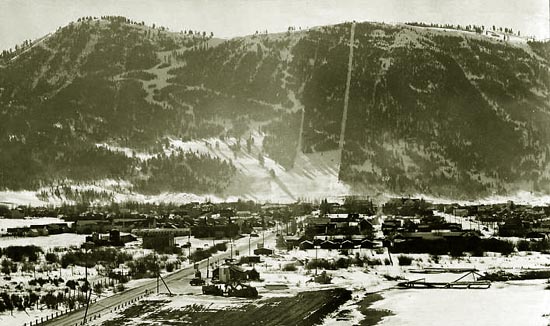
Looking south along Cache toward Snow King Mountain, 1947.
Earlier, Snow King was called "Simpson Ridge."
In the photo, the chairlift line is visible as well as the switchbacks for the trail to the top.
The trail was constructed by the Civilian Conservation Corps about 1937. In 1939, a tow rope to the top was constructed by Neil J. Rafferty (1909-1995) who
opened the Snow King ski area. Rafferty arrived in Jackson in 1930 allegedly with only ten cents. Following the
War he constructed the chairlift depicted in the next photo. The original tow line was powered by a Ford engine.
The Snow King ski area was the first to bring winter sports on a big scale to Jackson. According to Angus M. Theutmer, Jr. writing in the
Jackson Hole Magazine, Winter, 2011, winter sports in Jackson started with a casual comment made by Ben Goe, Sr. in the Frontier Saloon suggesting
a winter festival. Out of that comment a winter festival was organized and scheduled for Feb. 13 and 14, 1932. The principal event was
a dog derby. Other activities included a straight line ski race, ski jumping, a cutter race, and finally a dance at the
Rainbow Theater. According to Theutmer, various events
including a murder, blizzard, and bad publicity conspired to make the event less
than the success its organizers had envisioned. Yet it was a start. On the other hand the idea of
Jackson as a winter destination canalso be traced back to an article appearing in the Jackon's Hole Courier, Feb. 16, 1922, "Winter Sports in Jackson Hole."
In the article, the paper noted the sucess of the Afton Annual Dog Race. The writer quoted an R. W. Throckmorton, allegedly a
movie star and ski jumper, as offering to help plan a ski course on which the world's record of 236 feet could be broken. Mr. Throckmorton was
quoted as saying that the course would make Jackson a great winter resort.
Although the offer came too late for 1922, the paper urged the Jackson Commercial club, the South Park Community Club, the Wilson and Kelly Bachelor organizations to take an active interest.
Nothing apparently came of it.
As previously depicted with regard to West Broadway, chariot racing was conducted on Broadway in the summer. Cutter racing was in the winter using sleds mounted on
runners. An active participant in both chariot racing and cutter racing was John Wort.
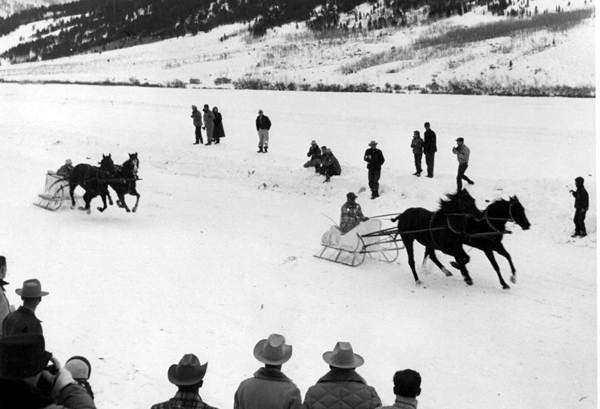
John Wort winning cutter race.
John Wort won the American Cutter Championship in 1953 and 1954. In 1952 the winner was George Robetson who hitched two elk to his cutter.
A newspaper syndicated writer explained:
"The horses gave the race everything they had. But the team with horns won, hooves down."
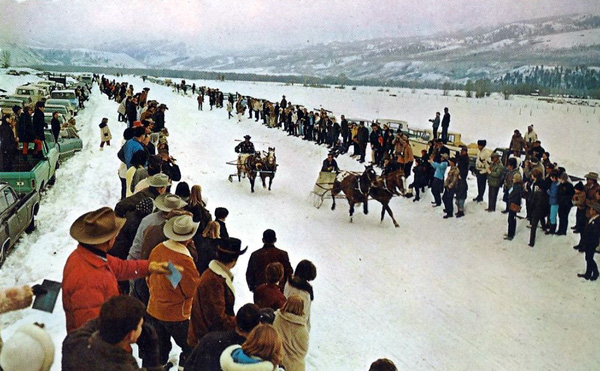
cutter Race, Jackson. Photo by David S. Digerness, undated.
David S. Digerness (1936-2009), was the author of a series of illustrated books on Colorado Railroad history. Additionally, he was a member of the
Denver Postcard Club.
Cutter races in western Wyoming and eastern Idaho go back into the 1920's. Cutter races were conducted in the Star Valley as early as 1924.
Allegedly, the practice began with two dairy farmers racing their dairy sleighs from Freedom to Thayne. On the other hand credit has been given to
James G. "Gibb" Scott, John and Jess Wort, and George Lumley. In the beginning many of the cutters were homemade. In 1948 the All American Cutting Racing Association was formed and
annual cutter races were held in Jackson until 1965. About 1960, however, use of luge-like
vehicles were discontinued in favor of chariots. The change was as a result of the use of dirt tracks instead of packed snow tracks. The packed snow
requires more maintenance. The races were discontinued from 1966 to 1972 when the Jackson Shrine Club resumed the races.
The first of the resumed races was held at Gibb Scott's ranch near where the shopping center
is now located.
Currently the proceeds derived from a cut of "Calcutta" wagering goes to the Shrine Hospital in Salt Lake City.
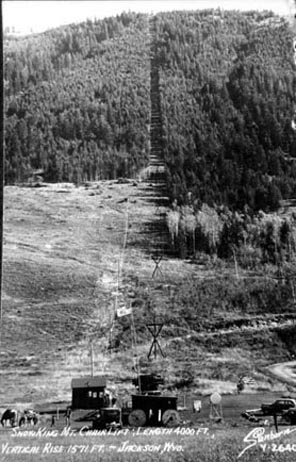 . . . . . .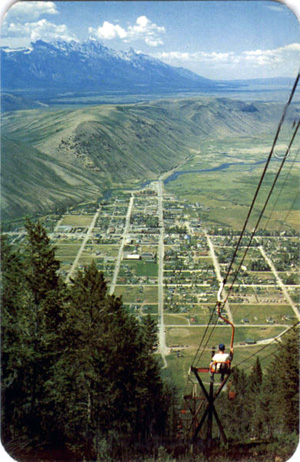
Left, Snow King Mountain Chair Lift approx. 1940;
Right, View of Jackson looking northwest from top of Snow King Mountain,
,1960's. Grand Tetons visible over the top of Black Tail Butte.
Both photos by William P. Sanborn.
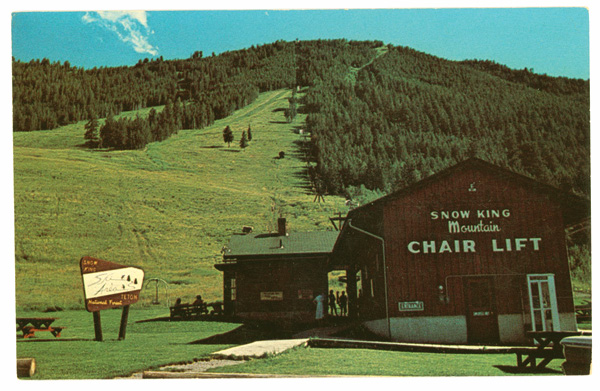
Snow King Chair Lift, approx. 1960.
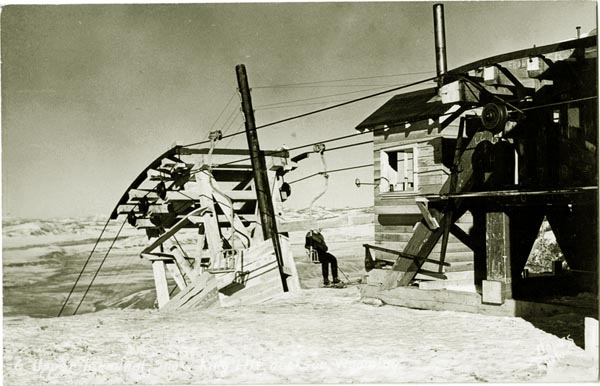
Snow King Chair Lift, undated
By the 1960's, Jackson had become a world famous ski resort. In 1967 it hosted an international race. It only took
Throckmorton's prediction forty-five years to come true.
Next Page: The Grand Tetons, Jackson's Hole.
|